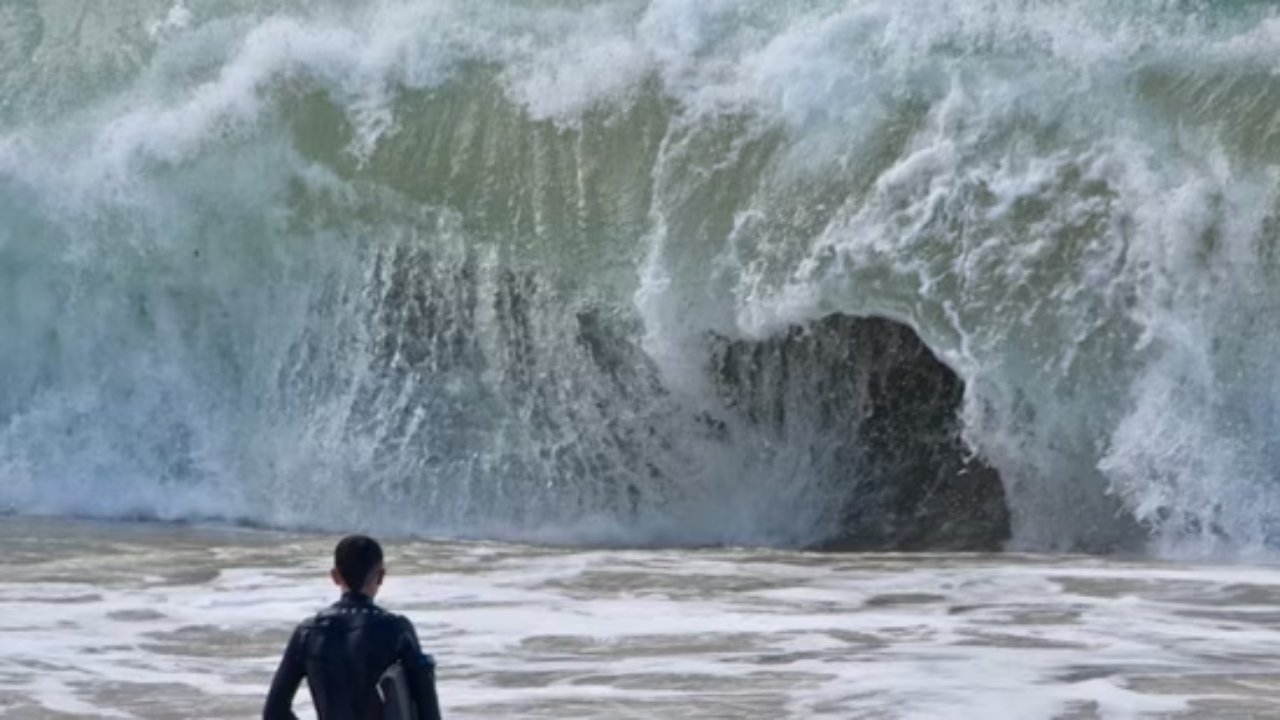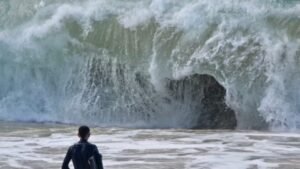Chicago Underwater: A City Grapples with Historic Flash Floods
July 9, 2025 – Chicago, Illinois, a city known for its resilience, faced one of its most challenging natural disasters in recent memory on July 8, 2025, as torrential rains triggered catastrophic flash flooding. In just 90 minutes, some areas of the city were inundated with over 5 inches of rain, transforming streets into rivers, submerging viaducts, and necessitating urgent water rescues. As the city begins its recovery, questions loom about preparedness, climate change, and the path forward.
A Deluge in the Windy City
The crisis began late Tuesday evening when a slow-moving, unforecastable storm system stalled over the Chicago metropolitan area. Radar estimates reported by meteorologists indicate that up to 6.5 inches of rain fell in parts of the West Side in roughly two hours, an extraordinary volume that overwhelmed the city’s drainage systems. A Flash Flood Warning, issued by the National Weather Service, remained in effect until 11:45 PM CDT, covering densely populated areas including downtown Chicago and the West Side.
The deluge primarily affected the West Side, resulting in reports of flooded basements, stranded vehicles, and buses submerged in water. Emergency responders were dispatched to multiple locations, including Western and Ogden and Fulton and Maple, where water rescues were conducted under hazardous conditions. Social media posts on X painted a dramatic picture, with unverified claims of residents climbing to rooftops and lightning striking the John Hancock Center. While these reports await confirmation, they underscore the chaos that gripped the city.
In contrast, North Side neighborhoods like Lincoln Park, Lakeview, and Edgewater experienced heavy rain but avoided the severe flooding seen elsewhere. The narrow but intense band of rainfall spared some areas while devastating others, highlighting the localized nature of the storm.
Emergency Response and Public Safety
The Chicago Emergency Management Agency acted swiftly, urging residents to stay indoors, avoid unnecessary travel, and steer clear of flooded streets. Authorities emphasized the dangers of driving through floodwaters, reiterating the National Weather Service’s mantra: “Turn Around, Don’t Drown.”
Meteorologists, including Fox 32 Chief Meteorologist Emily Wahls, described the flooding as a “dangerous situation,” with ongoing reports of flooded viaducts and submerged infrastructure. The Chicago Fire Department and other first responders worked tirelessly to ensure resident safety, though no official casualty figures have been released as of July 9, 2025.

Climate Change and Urban Vulnerability
The flooding has reignited discussions about Chicago’s vulnerability to extreme weather and the broader implications of climate change. Summer is Chicago’s wettest season, and 2025 has proven particularly severe, with meteorologists citing two factors: warmer atmospheric conditions that hold more moisture and stalled weather patterns that prolong heavy rainfall.
Chicago’s aging infrastructure, designed for historical rainfall patterns, struggled to cope with the deluge. Urban flooding, exacerbated by impervious surfaces like concrete and asphalt, funneled water into low-lying areas, amplifying the crisis. Experts argue that the city must invest in green infrastructure—such as permeable pavements and rain gardens—and update flood management systems to adapt to intensifying storms.
Community Resilience and Recovery
As floodwaters recede, Chicagoans are beginning to assess the damage. Early reports indicate significant property damage, particularly in West Side neighborhoods, but the full economic impact remains unclear. The city’s spirit of resilience shines through, with community members sharing resources and updates on social media platforms like X. Local news outlets, including NBC Chicago and the Chicago Tribune, have been instrumental in providing real-time information and safety guidance.
Mayor Brandon Johnson’s administration has yet to release a comprehensive recovery plan, but officials are expected to prioritize aid to affected residents and businesses. Federal assistance may be sought if damages exceed state and local capacity, a process seen in recent flooding disasters elsewhere, such as Central Texas.
Looking Ahead
The July 8 flooding serves as a stark reminder of nature’s power and the urgent need for preparedness in the face of escalating climate challenges. Chicago, like many urban centers, must balance immediate recovery with long-term adaptation. Investments in infrastructure, early warning systems, and community education will be critical to mitigating future risks.
For now, residents are advised to remain vigilant, monitor weather updates, and adhere to safety guidelines. The Chicago Emergency Management Agency continues to coordinate with local and state authorities to address the crisis. The city will test its resolve to rebuild stronger as it navigates these turbulent waters,but Chicagoans have faced challenges before and emerged united.














Post Comment